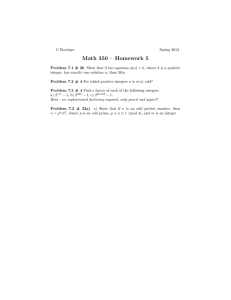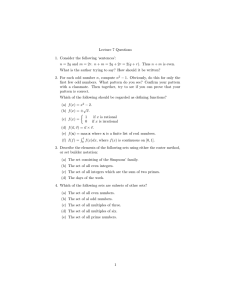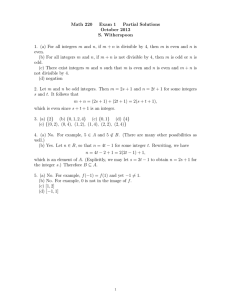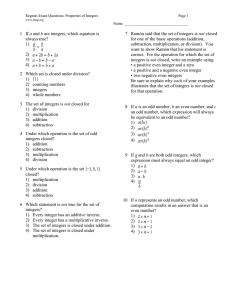Math 220 Exam 1 Partial Solutions September 2012
advertisement
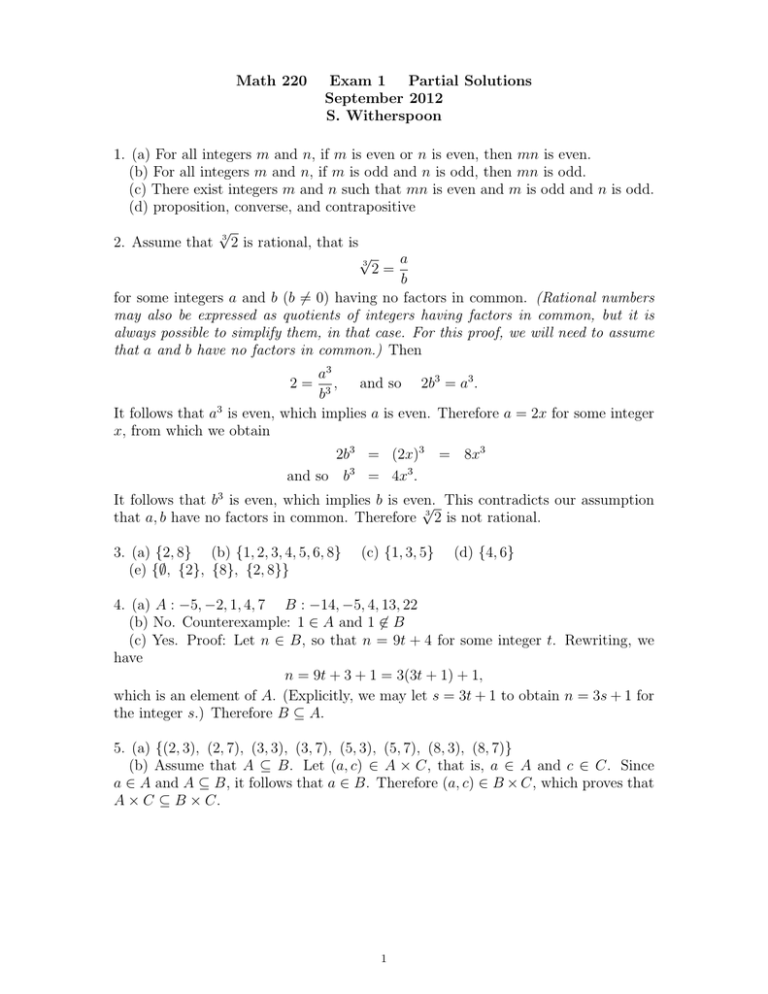
Math 220
Exam 1 Partial Solutions
September 2012
S. Witherspoon
1. (a) For all integers m and n, if m is even or n is even, then mn is even.
(b) For all integers m and n, if m is odd and n is odd, then mn is odd.
(c) There exist integers m and n such that mn is even and m is odd and n is odd.
(d) proposition, converse, and contrapositive
2. Assume that
√
3
2 is rational, that is
√
3
a
b
for some integers a and b (b 6= 0) having no factors in common. (Rational numbers
may also be expressed as quotients of integers having factors in common, but it is
always possible to simplify them, in that case. For this proof, we will need to assume
that a and b have no factors in common.) Then
2=
a3
, and so 2b3 = a3 .
b3
It follows that a3 is even, which implies a is even. Therefore a = 2x for some integer
x, from which we obtain
2=
2b3 = (2x)3 = 8x3
and so b3 = 4x3 .
It follows that b3 is even, which implies b is even.
This contradicts our assumption
√
3
that a, b have no factors in common. Therefore 2 is not rational.
3. (a) {2, 8} (b) {1, 2, 3, 4, 5, 6, 8}
(e) {∅, {2}, {8}, {2, 8}}
(c) {1, 3, 5}
(d) {4, 6}
4. (a) A : −5, −2, 1, 4, 7 B : −14, −5, 4, 13, 22
(b) No. Counterexample: 1 ∈ A and 1 6∈ B
(c) Yes. Proof: Let n ∈ B, so that n = 9t + 4 for some integer t. Rewriting, we
have
n = 9t + 3 + 1 = 3(3t + 1) + 1,
which is an element of A. (Explicitly, we may let s = 3t + 1 to obtain n = 3s + 1 for
the integer s.) Therefore B ⊆ A.
5. (a) {(2, 3), (2, 7), (3, 3), (3, 7), (5, 3), (5, 7), (8, 3), (8, 7)}
(b) Assume that A ⊆ B. Let (a, c) ∈ A × C, that is, a ∈ A and c ∈ C. Since
a ∈ A and A ⊆ B, it follows that a ∈ B. Therefore (a, c) ∈ B × C, which proves that
A × C ⊆ B × C.
1
